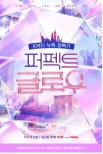Dangerous Pixie Bike Warns Youth Fracture
Nov 10, 2025
|
The death toll from bicycle traffic also rose sharply to 75. In particular, the number of bicycle accidents among teenagers under the age of 20 surged from 1,077 to 1620, showing the largest increase.
Recently, Pixie bikes, which have removed the braking system through SNS, have become popular among teenagers, raising concerns about leading to major life-threatening accidents.
Pixie bikes have a direct connection between the rear wheel and the pedal, so you can enjoy a sense of speed as the weight of the bicycle decreases. However, accidents caused by dangerous behaviors of some users are increasing, such as removing brakes, driving acrobatically in the roadway, and filming videos in defiance of safety.
According to statistics on bicycle accident patients surveyed by a university hospital in 2018, the number of patients aged 11 to 20 was the highest, and male patients were about three times more than women. The lower arm was the most common area of major damage, followed by shoulders, feet, ankles, wrists, and hands.
The most common thing in bicycle accidents is fractures. Personal means of transportation that are difficult to brake, such as pixie bicycles and electric kickboards, often lead to fractures as they fall and touch the ground with their hands during sudden braking or jumping.
In particular, the collarbone is a long S-shaped bone located under the neck and in front of the shoulder that serves to fix the arm to the torso. Broken or cracked clavicles are called clavicle fractures and are mainly caused by large external shocks. Clavicle fractures have little damage to surrounding tissue and often only simple fractures occur, accounting for about 2-5% of all fracture patients. Rarely, it is necessary to be careful because it can cause problems such as complications or aftereffects by stabbing open fractures or large nerves or blood vessels that protrude to the outside due to bone fragments that occurred during fractures.
Collar fractures occur as external shocks or accidents are transmitted to the arms, shoulders, and chest. When a fracture occurs, pain occurs every time you move your arm, and the pain persists even if you don't move over time. The clavicle area is swollen and bruised, or bone protrudes, and in severe cases, nerve paralysis in the arm and blood circulation disorders due to vascular compression may also occur.
In order to diagnose clavicle fractures, a specialist checks the movement of the arm, the degree of pain, and swelling, and identifies the broken location and extent of the bone through an X-ray examination.
Depending on the condition, computed tomography (CT) and magnetic resonance imaging (MRI) tests may be performed to check for crushed fractures, the degree of muscle, soft tissue, and nerve damage, and to establish a surgical plan.
In the case of a simple fracture, fix it for about 6-8 weeks using an arm bandage so that the bone can stick well in its original position. If nerve or blood vessel damage is accompanied and pulverization or open fracture occurs, surgical treatment is required. In most cases, bandage fixation is performed and treatment and rehabilitation are performed for about six months, and the fracture area is fully fused and recovered, but if bones do not stick well or daily life is uncomfortable due to deformation, additional treatment and surgery can be considered.
Park Ji-soo (orthopedic surgeon) at Ulsan Elijah Hospital's Joint Spine Center said "It is important to keep in mind that bicycles used primarily to protect health can lead to major accidents if they ignore safety for the pleasure of the moment."Don't forget that illegally modifying a bicycle can threaten the lives of not only you but also others, and you should follow safety rules." he advised.
In addition, when you fall while riding a bicycle, you often pass it lightly because it is not a big problem because it is only a simple pain, but fractures are not easy to identify on the outside and the causes of pain can vary, so you must visit a hospital for an accurate diagnosis after an accident or fall to prevent even greater aftereffects," he stressed.
On the other hand, when using a bicycle, you must wear a safety helmet, prohibit the use of sidewalks and crosswalks, and comply with right-hand traffic laws and traffic laws comparable to vehicles. Be careful not to use the right edge of the road or a bicycle-only road and the speed does not exceed 15km/h on the pedestrian road. You should check your lights in advance for night driving and develop the habit of maintaining your bike. Crossings must never get off and cross and drink alcohol or drive beyond capacity.
|
This article was translated by Naver AI translator.















